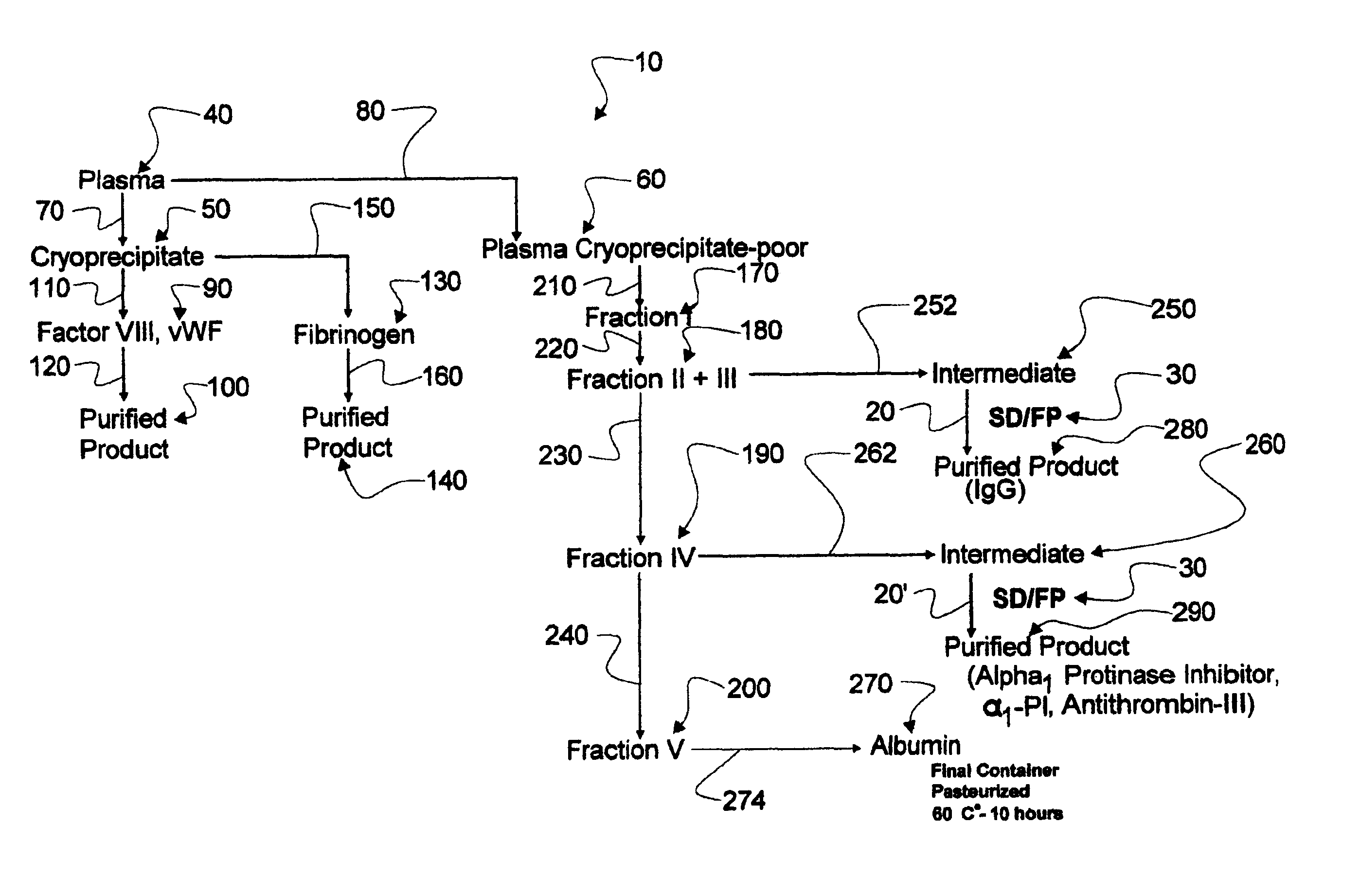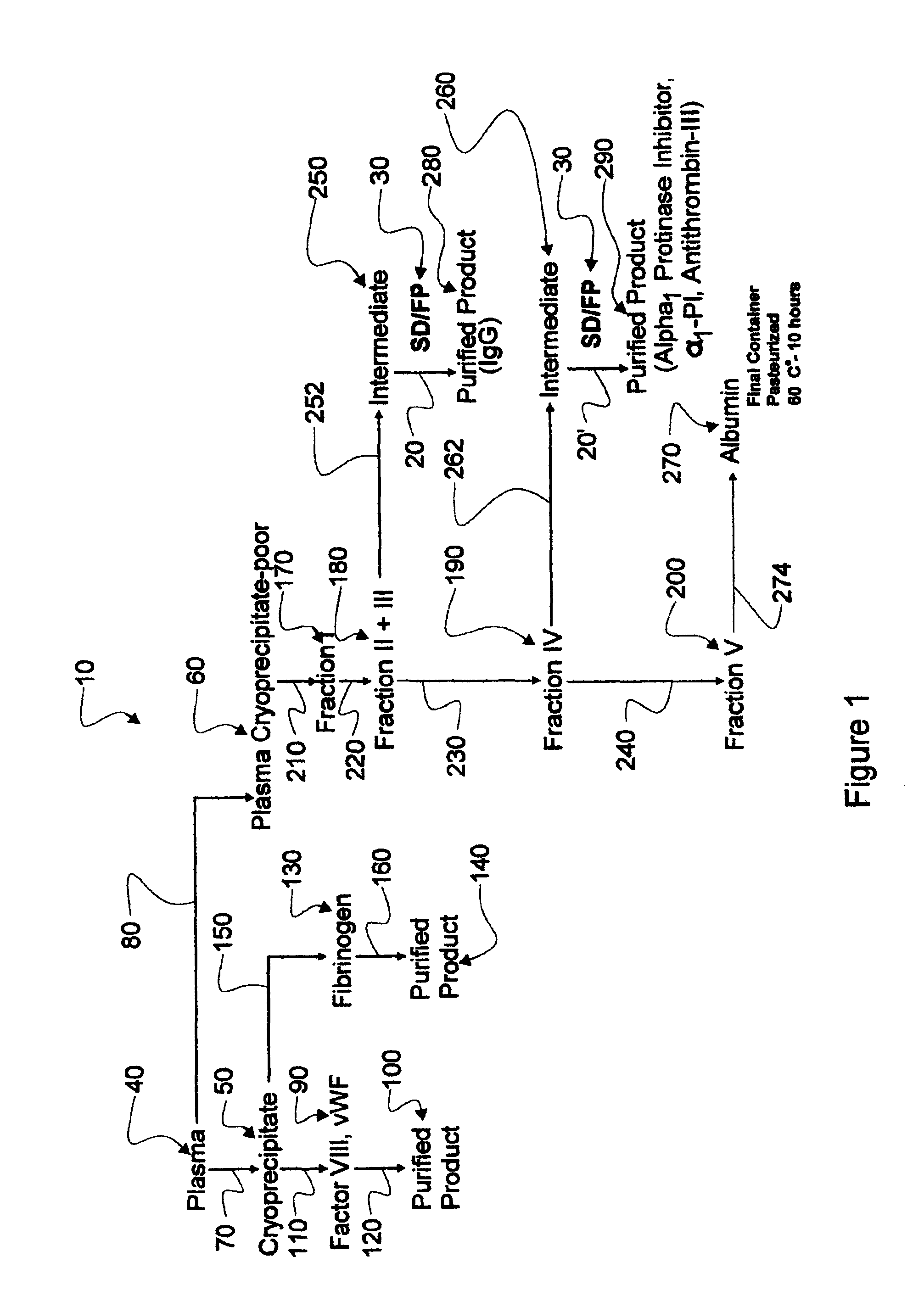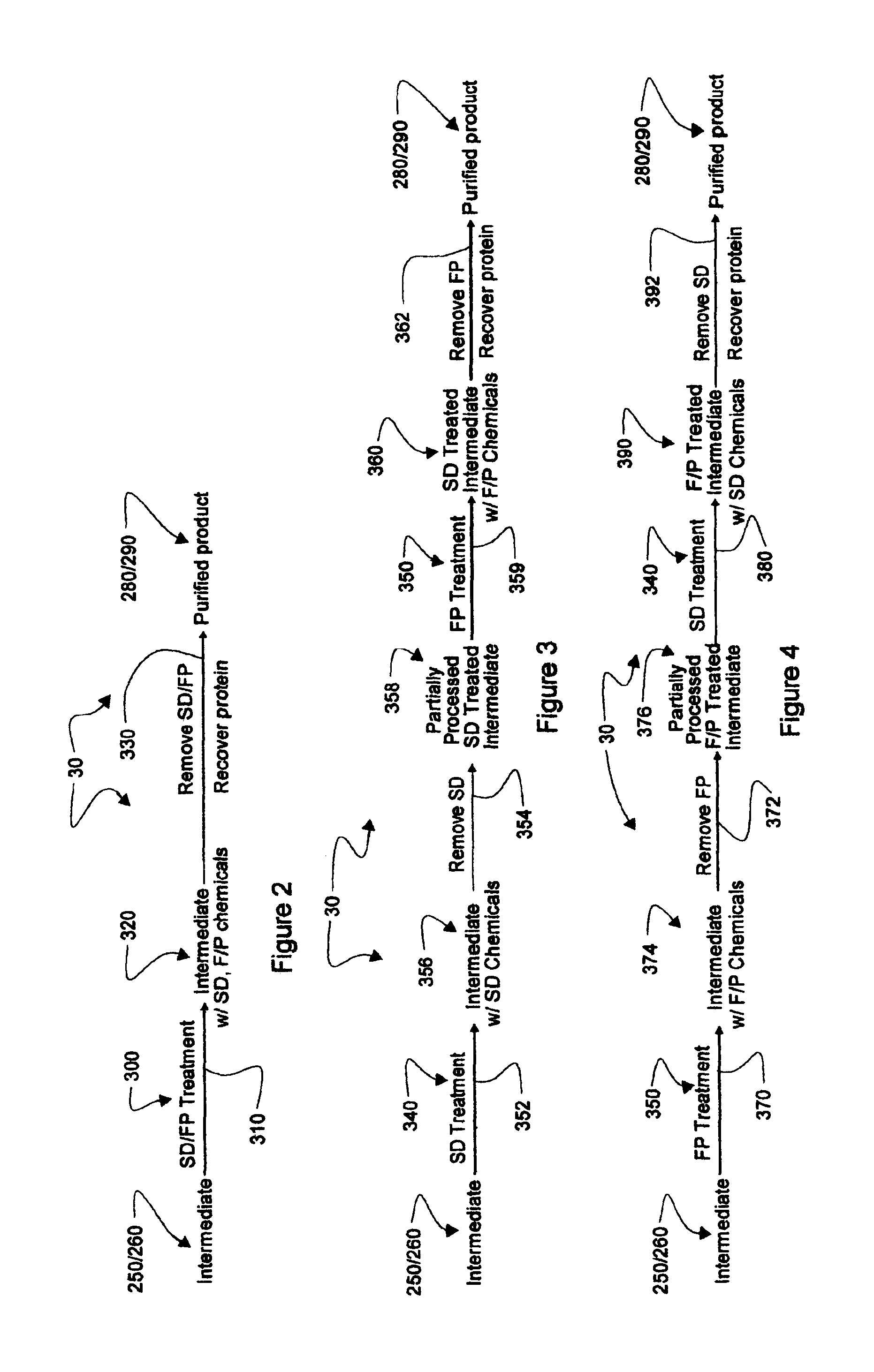Augmented solvent/detergent method for inactivating enveloped and non-enveloped viruses
a technology of inactivation method and inactivation method, which is applied in the field of methods for sterilizing and/or depyrogenating products and materials, can solve the problems of ineffective inactivation method of prions, long process time and handling loss, and use of formaldehyd
- Summary
- Abstract
- Description
- Claims
- Application Information
AI Technical Summary
Benefits of technology
Problems solved by technology
Method used
Image
Examples
experiment # 1
Experiment #1
Objective
[0050]Determine whether or not processing by chemical solutions made according to the instant invention cause denaturation of protein or cross-linking (aggregation) of the proteins.
Procedure
[0051]A stock of the following solutions was prepared in the concentrations indicated:
Solution #1
[0052]Formaldehyde (HCHO) at 50,000 ppm was prepared by diluting Formaldehyde solution [37% (370,000 ppm)] to 50,000 ppm by adding 13.5 ml of HCHO to 86.5 ml of saline with stirring. Final Formaldehyde dilution in the solution was 50,000 ppm (5% HCHO).
Solution #2
[0053]Phenol—50,000 ppm.
[0054]Five grams of crystalline phenol was added to 95 ml of saline. After solution stirring, the resultant solution was diluted to 100 ml with saline, resulting in a final concentration of phenol of 50,000 ppm.
Solution #3
[0055]Formaldehyde / Phenol solution 50,000 ppm each. One gram of phenol was added to 20 ml of solution #1 above—after stirring, concentration of each sterilant was 50,000 ppm.
Proce...
experiment 2
Objective
[0062]Determine antibody responses of gamma globulin solutions and sterile treated gamma globulin solutions to various levels of formaldehyde, i.e. 250 ppm, 500 ppm, 1000 ppm, and 3000 ppm.
[0063]The purpose of this experiment was to demonstrate that when formaldehyde is added to a protein solution of gamma globulin, that it will not cross-link nor denature the protein so that it will not function.
Procedure
[0064]Gamma globulin solutions employed contained antibodies for the blood types of A and B because the solutions were gathered from many donors and pooled. Th level of antibodies were not at a high titer but they were known to be in the sample blood which was typed as AB in this experiment. Cells were removed from the blood bag and washed 3 times in saline to remove all proteins from the red blood cells (RBC). The RBC were then adjusted to a 5% concentration level of cells in saline and stored at +5° C. during the experiment. Three drops of cells were put into the bottom ...
experiment # 3
Experiment #3
Objective
[0067]Observe effects of application of solutions made according to the invention and applied to samples to determine changes, if any, in amino acids that make up gamma globulin solutions.
Procedure
[0068]This experiment involved electrophoresis of the gamma globulin solutions. A Beckman serum protein electrophoresis kit was obtained and used to electrophorese the gamma globulin solutions described in Experiment #1 above. A control solution (no treatment), and gamma globulin solutions treated with formaldehyde at 3000 ppm, phenol at 3000 ppm and the combination of formaldehyde / phenol at 3000 ppm each were prepared.
[0069]The reason for subjecting protein to an electrophoresis test is, should there be changes in the amino acids that make up the gamma globulin solutions, then such changes cause the proteins to migrate at a different rates thereby demonstrating subsequent changes in electrophoresis patterns. In the case of hemoglobin electrophoresis, the globin porti...
PUM
| Property | Measurement | Unit |
|---|---|---|
| time | aaaaa | aaaaa |
| time | aaaaa | aaaaa |
| temperature | aaaaa | aaaaa |
Abstract
Description
Claims
Application Information
 Login to View More
Login to View More - R&D
- Intellectual Property
- Life Sciences
- Materials
- Tech Scout
- Unparalleled Data Quality
- Higher Quality Content
- 60% Fewer Hallucinations
Browse by: Latest US Patents, China's latest patents, Technical Efficacy Thesaurus, Application Domain, Technology Topic, Popular Technical Reports.
© 2025 PatSnap. All rights reserved.Legal|Privacy policy|Modern Slavery Act Transparency Statement|Sitemap|About US| Contact US: help@patsnap.com



